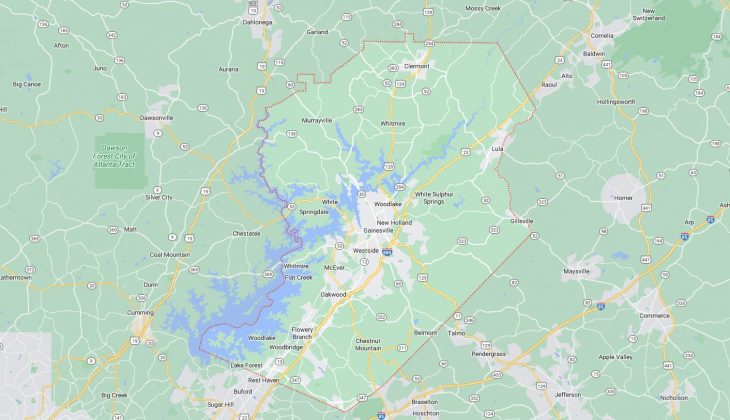Cities and Towns in Hall County, Georgia
Founded in 1818, Hall County is one of 159 counties in the state of Georgia. Historically, Hall County was formed from Cherokee Cessions of 1817 and 1819. The city of Gainesville is the county seat. With FIPS code of 139, Hall County has a population of 207,369 and area of 394 square miles (1,020 km²).
List of all cities in Hall County, GA alphabetically
| City/Town | Postal Code | Area Code |
| Chestnut Mountain, GA | 30502 | 770/678/470 |
| Clermont, GA | 30527 | 770/678/470 |
| Flowery Branch, GA | 30542 | 770/678/470 |
| Gainesville, GA | 30501 | 770/678/470 |
| 30503 | 770/678/470 | |
| 30504 | 770/678/470 | |
| 30506 | 770/678/470 | |
| 30507 | 770/678/470 | |
| Gillsville, GA | 30543 | 770/678/470 |
| Lula, GA | 30554 | 770/678/470 |
| Murrayville, GA | 30564 | 770/678/470 |
| Oakwood, GA | 30502 | 770/678/470 |
| 30566 | 770/678/470 | |
| Westside, GA | 30501 | 770/678/470 |














































